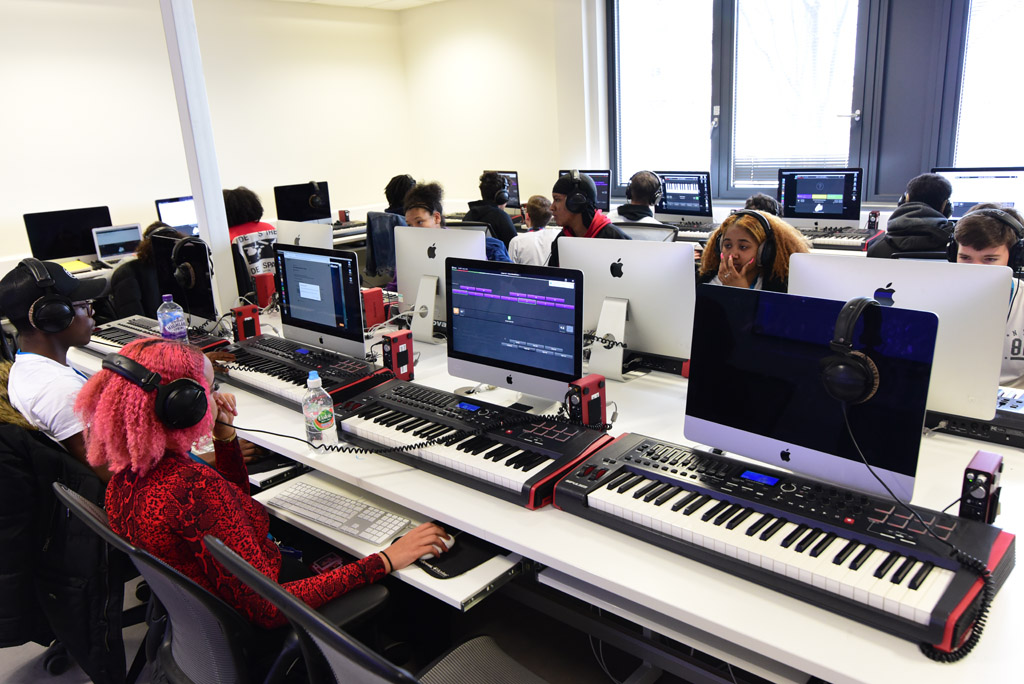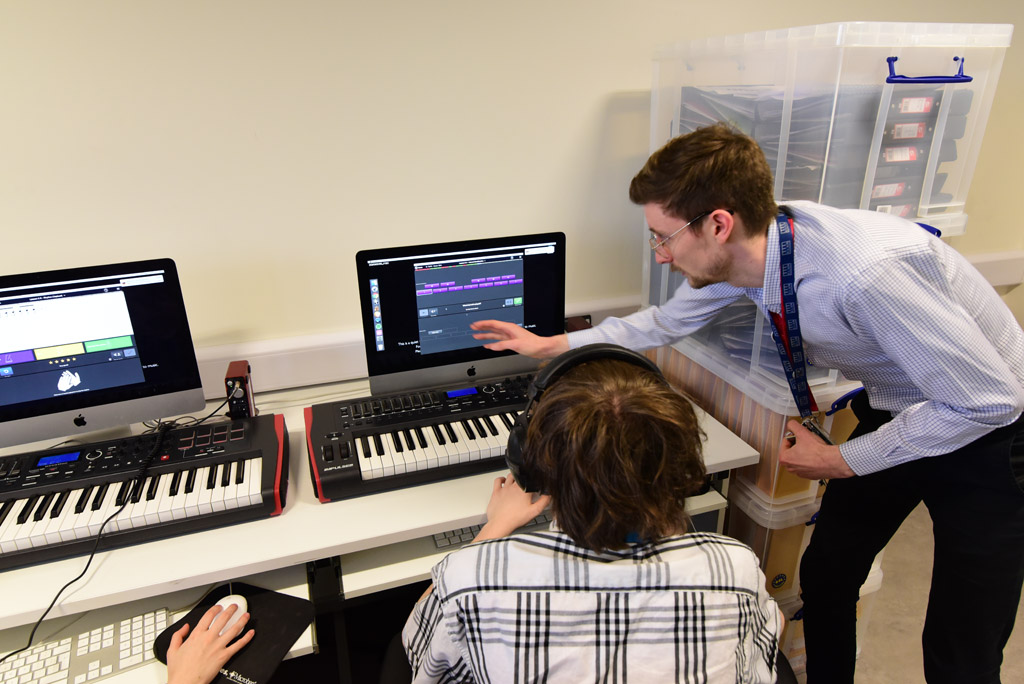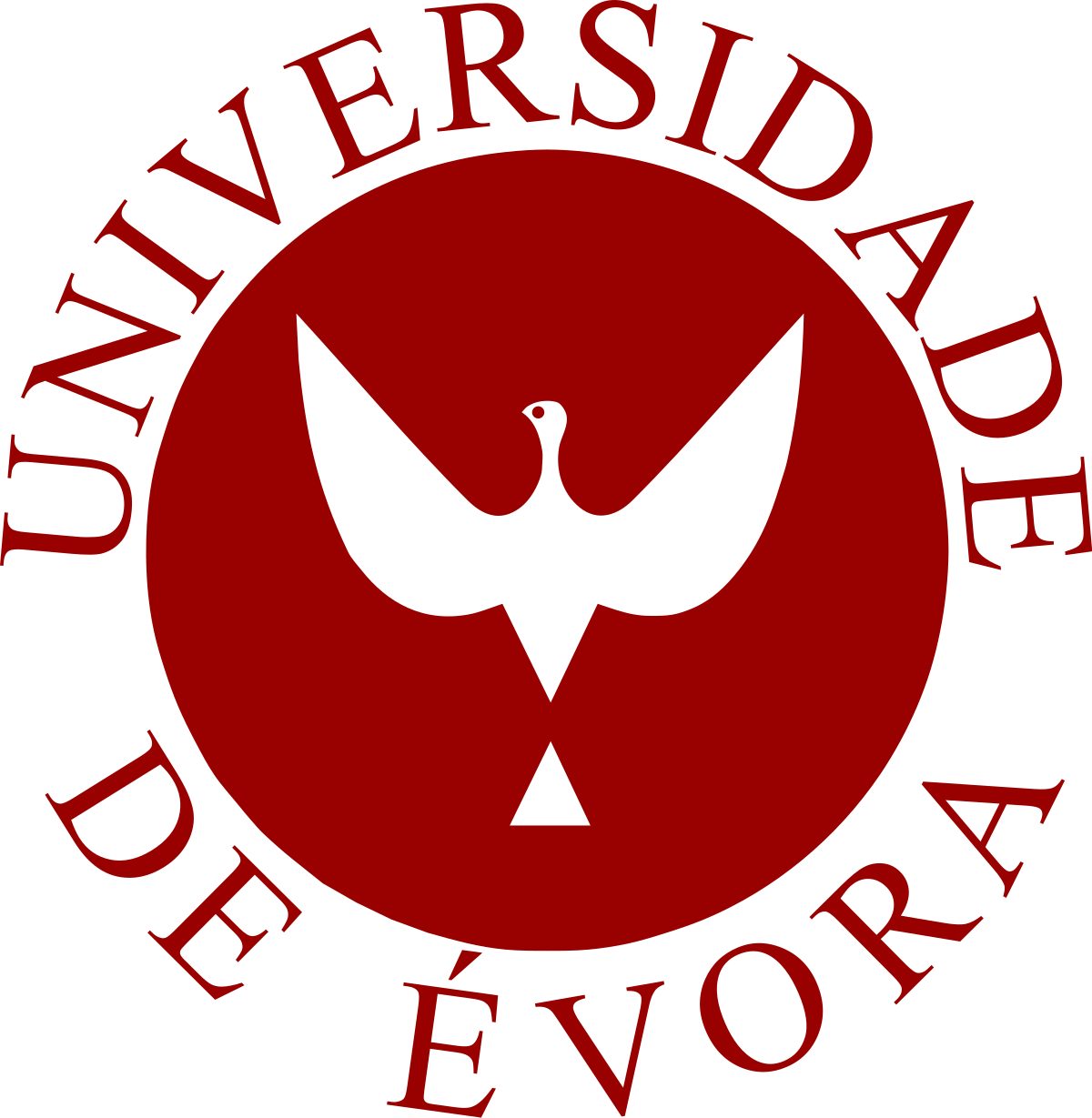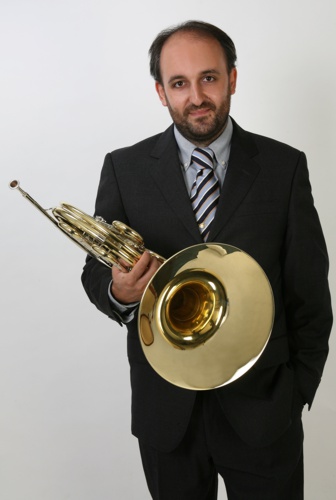Testimonials from music schools
Academic users share their thoughts about EarMaster
We have a lot of good things to tell about EarMaster, but being the developers of the software it's easy to argue that we are rather biased. So we have asked some of the academic users of EarMaster to share their thoughts and explain why they chose EarMaster, how they use it, and what educational strategies they aimed to achieve by using it in their classrooms.
East London Arts & Music, UK - Case Study from Inspire-Music.org

ELAM’s Musicianship unit provides trainees 1x50-minute EarMaster session per week. Four core pedagogical principles underpin the success of this program:
- Sequential-Learning Journey: The ELAM EarMaster Course moves trainees independently through a journey from beginner, through intermediate, to advanced aural perceptions skills. This journey from fundamentals to advanced principles promotes inquiry-based learning and intrinsic motivation.
- Discovery: Like a video game, trainees ‘discover’ new information, requiring them to ‘solve the puzzle’ and work out the way forward on their own. EarMaster offers built in instructional pages, links to further learning and repeats failed questions until trainees achieve mastery. The teacher (or learning guide), provides clues and encouragement through the journey to help trainees overcome obstacles and maintain focus and motivation.
- Independence: Trainees work independently through a series of assigned lessons, setting individual targets, goals and meeting built-in milestones. The program does not include built-in competition, however, natural competition develops within the classroom setting, motivating trainees towards higher levels of achievement. Trainees are provided a Cloud EarMaster account and are able to access lessons both at ELAM or from home on any computer (PC/Mac) or iPad (mobile version coming soon!)
- Differentiation: Trainees move at their own pace, based on prior knowledge and ability, through the ELAM EarMaster course and beyond to ‘industry-standard’ exercises. Further, EarMaster automatically tailors each question based on trainee understanding, frequent errors and ability.
The EarMaster Cloud Software tracks and measures progress data per trainee in a simple and understandable way. Further, EarMaster Software allows data to be exported to .csv format for further data analysis. ELAM maps progress data of trainees on a termly basis against baseline, projected grades to ensure progress is being achieved. Beyond specific summative milestone outcomes, ELAM also focuses its data analysis on soft skills, such as effort, time taken per question, and how often a trainee repeats an exercise. The teacher acts as a guide for trainees, using cognitive learning models to help trainees slow down, process their mistakes and successes to support their understanding of the process of learning. Targeting the learning methods from an early stage has proven to have significant impact on outcomes.

Trainees development and growth, supported by the Musicianship unit at ELAM, is both quantifiable and qualifiable. Evidence of learning and progress transcends lesson-by-lesson exercise completion data, and makes it way into the Live Rooms and Studios at ELAM. Trainees demonstrate and apply their aural perceptions skills daily, with increasing accuracy and complexity during their time at ELAM. Trainees reference concepts, skills and terminology learned on EarMaster across their Creative, Technical and Entrepreneurial units at ELAM. Quantifiable data is mapped across target grades and shows specific strengths and areas for improvement (ie. Rhythmic sight-reading, Pitch recognition, Triad identification, etc.). Learners are empowered through EarMaster with a user-friendly ‘results’ feature to constantly reflect and improve on their results.
Read the full case study at Inspire-Music.org
Évora University, Portugal
 At ÉVORA university I asked the students to work a minimum of 20 hours with EarMaster since mid September. It is a simple task as they have 2 hours of classes per week and they are doing exercises each time, and still they can work at home.
At ÉVORA university I asked the students to work a minimum of 20 hours with EarMaster since mid September. It is a simple task as they have 2 hours of classes per week and they are doing exercises each time, and still they can work at home.
So evaluating these students is really objective as I can evaluate the amount of time they dedicated (quantitative evaluation) and they worked and how they worked (qualitative evaluation).
It is a new experience for me as I’m a horn teacher, not a Aural training teacher, but because I know EarMaster very well I was responsible for implementing it at Évora a university, as the aural training teachers don’t really know how to work with EarMaster. It is really a dream... while I’m in the train traveling to ÉVORA, I create a task for the week with aspects that aren’t included in the general courses. Each student is working on his own computer with headphones and I can have time to work with each student individually establishing a working plan for each student according to his individual difficulties.
For example I open the statistics and see how the student is identifying intervals. Then I see that he is missing Major 6th, so I click on the Major 6th and analyse with the student if he is missing ascending/descending and which combination of intervals are better and worse.
The only aspect that can’t be worked on the class are the ones that require microphone (is isn’t practical a group of more than 30 students singing in the same room... so they can work this part at home).
Thank you again for this wonderful software and all the improvements you have been doing

Ricardo Matosinhos
Évora University, Portugal

BeatLab Academy, Los Angeles, USA
"Although Beat Lab Academy™ is a modern music production school that teaches students to use the computer as a musical instrument; we emphasize a great amount of our teaching around Music Theory.
The first level of our full program covers fundamentals of music theory and ear training. By using EarMaster throughout our classes, teachers are able to explain, demonstrate, and engage student development with much more ease and efficiency.
EarMaster is the best ear training software we ever came across and we are honored to include it in our curriculum."
Larry Corbi
BDM, Beat Lab Academy
www.BeatLabAcademy.com

University of Nevada, Reno, USA
"Congratulations are in order; finally a comprehensive ear-training program that truly suits all of our needs at the University of Nevada, Reno!
I have taught the two-year ear-training core curriculum for music majors for more than 20 years and have used a number of computer-assisted classroom teaching aids. I ran two programs simultaneously for a number of years because no individual program "did it all." EarMaster has finally solved that problem.
There are three aspects of the EarMaster [...] program that I find compelling:
- The ease of operation for both the student and teacher.
- The power and comprehensiveness of the programming.
- The flexibility and range of applications.
EarMaster is very user-friendly and the students pick it up immediately. Their comments about EarMaster are universally positive in the mandatory class evaluations completed at the end of every semester. It took very little time to learn how to write my own tutors and lessons, always a worry for professors who have dealt with the difficult learning curves of various music publishing programs.
Many people might say that a computer cannot replace human beings, but EarMaster certainly comes close in many ways. Given the nature of our discipline and the large amount of practice required, EarMaster is a patient and non-judgmental teacher. I often tell my clarinet and saxophone students to practice as if I were sitting next to them and think about what I would say to them while practicing. That is what EarMaster does for my sight-singing students. Your efforts have made EarMaster an integral part of our program and I can’t imagine getting along with out it. Thank you."
Dr. David Ehrke
Professor of Music
University of Nevada, Reno




